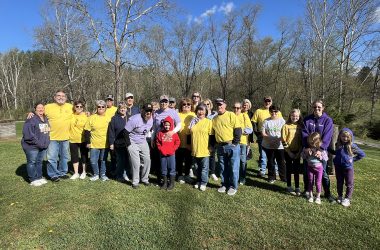John 20:1-10, 19-20
The text before us consists of two eye witness accounts which document the resurrection. The first took place early on Easter morning; the second on Easter evening.
Mary Magdalene was the first to witness the empty tomb. It was not what she and the women with her expected to find. They came expecting to find a sealed tomb. She came hoping that there might be some men present who could roll back the stone so she and those with her could anoint the dead body of Jesus. The lateness of the hour in which the dead body of Jesus was taken down from the cross precluded any possibility of anointing His body before the sabbath. The law of Moses did not allow the dead to be anointed upon the sabbath day. Mary and those with her came in the early hours of the first day of the week. The sabbath had passed.
The unsealed and empty tomb gave Mary Magdalene cause to believe that the body of Jesus had been removed by some unknown party. Magdalene, formerly possessed by seven devils, had directly experienced the miraculous healing power of the Lord. She had listened to His words and she believed Him to be the promised Messiah. She, however, did not realize that He should rise from the dead.
Mary ran from the sepulchre until she came to Simon Peter and John, the human author of this gospel. John always refers to himself as the other disciple or as the disciple whom Jesus loved. Mary reported the body of Jesus was missing, whereabouts unknown. Peter and John both ran to the sepulchre with John arriving first. Why did they run? Peter and John had to confirm what Mary had told them. They had to make sure that there was no mistake, that Mary’s report was accurate.
Upon arriving at the scene, the first thing that John noted was that the burial clothes that covered the body were present. This is not what one would expect to find if the body of Jesus had been stolen. When Simon Peter arrived, he, too, made note of the presence of the burial clothes. The only reason for burial clothes to be on the scene is that they were no longer needed. The clothes were found at the spot where the need for them disappeared.
John also noted that the burial cloth that was about the head was wrapped together in a place by itself. What John witnessed was, not head wrappings unwound, but the wrappings intertwined together in the same fashion as they were when placed upon the dead body. The wrappings were not removed; they were left behind! The wrappings were found separate from the linen in which Jesus was buried such that John and others would know that the body was not taken by a supposed grave robber.
Peter and John saw these things and believed (v. 8). Believed what? They believed that Christ had risen from the dead! They did not believe that He had risen because the scriptures required such (see v. 9). They believed that He had risen because of the physical evidence which they beheld. Later, the disciples would understand the scriptures, and know that His resurrection had been declared by Isaiah (Isa. 53:10). The disciples’ understanding of scripture would not come until they were empowered by the Holy Spirit (Jn. 14:26).
The second eye witness account which John recorded occurred on the evening of the first Easter. Since the setting of the sun marks the end of a day, this event occurred just before sun set.
The doors were shut because the disciples were afraid that the Jewish leaders would do them harm. The shut-up doors, however, were no barrier to the resurrected Jesus who appeared in their presence.
Jesus’ first words were: “Peace be unto you.” While these words can be an expression of good will, coming from one raised from the dead, the words are clearly a directive to fear not. Jesus then showed them His hands and His side. Why? The Lord wanted them to witness His bruises. They had seen Him upon bruised upon the cross and now they beheld His bruises. They beheld the One who was bruised for their iniquities (Isa. 53:5). Jesus showed them His hands and His side so that they might know Him in a new way. They had known Him as one possessing knowledge uncommon to men, as a doer of miracles, but, now, for the first time, they beheld Him who was bruised for them, bruised in accordance with the scriptures (Ps. 22:16).
There are many in this world who know of Jesus. One can know of Him as a teacher, a prophet and as a selfless individual, but one cannot truly know Jesus unless one believes that Jesus is risen and has given Himself upon the cross to satisfy sin’s debt.



